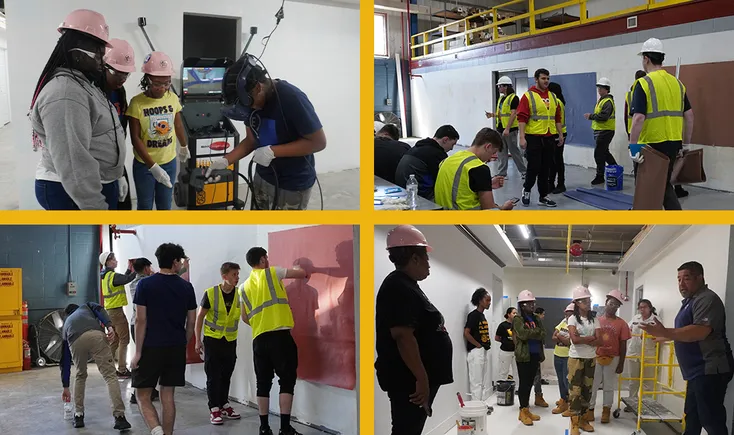With a societal focus on going to college, entering the trades may not initially seem like a viable pathway to long-term success or financial stability. However, the International Union of Painters and Allied Trades (IUPAT) is working to change that perception. Through its innovative pre-apprenticeship programs, IUPAT is not only opening doors to the trades but also demonstrating how these opportunities can lead to stable, middle-class careers that benefit workers and their families. For contractors, these programs provide a skilled, prepared workforce ready to meet industry demands.
IUPAT offers pre-apprenticeship programs across the United States and Canada. These programs are tailored to the specific needs of the regions and communities they serve. For example, IUPAT District Council 82 (covering Minnesota, Montana, North and South Dakota, and Wisconsin) and District Council 21 (encompassing Pennsylvania, Delaware, Southern New Jersey) have partnered with local schools to introduce students to these career pathways.
There are two main types of pre-apprenticeship programs. The Career Exploration Pathway provides exposure to various trades, allowing participants – often high school students – to explore different specialties like painting and glazing while gaining essential cross-trades skills, such as health and safety training. Participants can also work towards earning a GED or receive other non-trade-specific education, like improving language fluency. These foundational skills prepare individuals for success in registered apprenticeship programs. The Trade-Specific Pathway is more focused on preparing participants for direct entry into a specific trade’s registered apprenticeship program. For instance, IUPAT District Council 51 (serving the Washington, D.C., Maryland and Virginia areas) and District Council 35 (serving Massachusetts, Connecticut, Maine, New Hampshire, and Vermont) offer programs specifically tailored to the glazing trade. Participants gain hands-on experience and earn credits toward their apprenticeships, much like college students receiving credit for relevant coursework.
IUPAT’s pre-apprenticeship programs are particularly impactful for underserved groups, including women, veterans, and disadvantaged communities. For example, the IUPAT Veterans Program recently had several veterans graduate from an advanced three-week pre-apprenticeship program. During this time, they learned the basics of commercial and industrial painting, and earned certifications for CPR/First Aid, OSHA 10, and Confined Space Entry. Upon entering the apprenticeship program at District Council 5 (covering Washington, Alaska, Northern Idaho, Oregon, and Utah), these veterans started with 12 months of credit, giving them a significant head start in their careers. Pre-apprenticeship programs prepare students for direct entry into registered apprenticeships and employment.
Pre-Apprenticeship programs don’t just benefit participants – they’re also advantageous for contractors. Graduates of pre-apprenticeship programs enter their apprenticeships with foundational skills, certifications, and experience. This reduces the time and resources contractors must invest in training Those who do complete a pre-apprenticeship are more likely to finish their apprenticeships successfully, translating to a more reliable, committed workforce for contractors. As the IUPAT continues to partner with schools and community organizations, contractors can tap into a steady pipeline of motivated, skilled workers. Programs like IUPAT’s veterans program expand outreach efforts and diversify the talent pool. A workforce that starts with practical skills and industry knowledge is more efficient, productive, and ultimately more profitable for contractors.
As technology advances and construction projects become more complex, the need for highly skilled tradespeople is growing. Registered apprenticeship programs address this demand by preparing workers for the challenges of modern construction. These programs also provide an alternative to the traditional college pathway, among the trades an appealing option for high school students seeking a particular, rewarding career. Importantly, these programs aren’t limited to students. Adults exploring a career in the trades can also benefit, gaining hands-on experience and determining whether a practical trade is the right fit for them. The opportunities don’t end with becoming a journeyperson; graduates can advance into roles as union staff, inspectors, architects, or even executives.
Pre-apprenticeship programs are continuing to transform the construction industry by creating a workforce that is skilled, experienced, and ready to meet the demands of tomorrow. For contractors, this means access to a labor pool that is not only better prepared but also more likely to succeed long-term. As the industry evolves, programs like those offered by IUPAT will play a critical role in ensuring contractors have the skilled workers they need to thrive. By investing in these programs, contractors are not only building a workforce for today, but also securing a future for the construction industry

